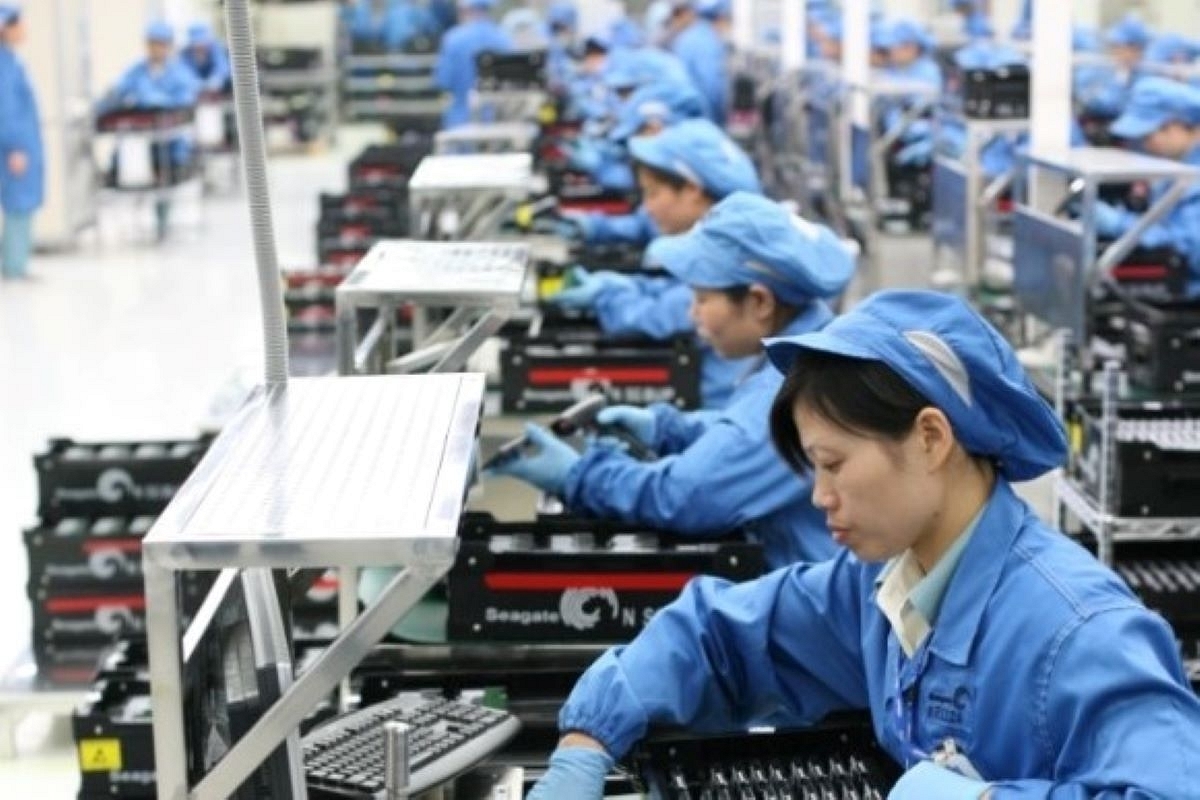World
China's Economy Is Bouncing Back, But It's Far From Pre-Pandemic Levels
- China's National Bureau of Statistics announced a stable recovery and good start for the economy, but warned of a complex and uncertain situation.

China's Q1 saw a rise in industrial output by 3 per cent. (Representative image).
China's economy saw a 4.5 per cent year-over-year expansion in Q1 due to increased exports, infrastructure investment, and a rise in retail consumption and property prices, contributing to the recovery of the world's second-largest economy.
The Chinese government's efforts to restore business confidence after pandemic controls and policy changes led to a better-than-expected increase in official figures, surpassing a 4 per cent rise predicted by analysts.
The growth rate in Q1 fell below the government's 5 per cent annual target due to a Covid-19 outbreak. However, economists anticipate acceleration in economic growth as the year advances.
China's president, Xi, has started his third term with a goal to revitalize economic growth as GDP expanded just 3 per cent last year, falling short of the official target of 5.5 per cent, the lowest in decades.
China's recovery is vital for the world's economic growth in the face of inflation, interest rate hikes and slow expansion caused by the pandemic and Russia's attack on Ukraine.
China's National Bureau of Statistics announced a stable recovery and good start for the economy, but warned of a complex and uncertain situation. Domestic demand is still weak and economic recovery isn't solid yet.
China lifted its zero-Covid restrictions last December, as citizens grew wary of the prolonged lockdowns that had halted regular activities throughout the year.
The move led to a surge in consumer demand within the retail industry, with sales growing by 5.8 per cent YoY in Q1 and 10.6 per cent in March. However, these figures were compared to last year's low base, as Shanghai had implemented a lengthy lockdown in March 2020.
China's Premier Li Qiang hinted at easing the government's crackdown on businesses, which had been responsible for wiping out a significant amount of money from property developers and internet platforms, during a recent parliamentary meeting.
The first quarter saw a rise in manufacturing investment, which increased by 7 per cent YoY. Industrial output also gained by 3 per cent. Additionally, the quarter displayed strong growth in exports which were up by 8.4 per cent.
State-led infrastructure investment increased by 8.8 per cent and overall fixed asset investment rose by 5.1 per cent However, private investment was weak and only increased by 0.6 per cent. There was a decline in March.
Housing starts in the first quarter declined by 19.2 per cent year on year, adding to the ongoing troubles in the property sector. While there was a slight dip in home sales by area, sales by value saw a growth of 4.1 per cent. A positive sign was the increase in new home prices, which rose at their fastest rate in 21 months during March.
Economists expect the second quarter to have improved momentum due to low base effect, yet they cautioned that strong growth in consumption and property may be difficult to maintain, and weaker developed markets could threaten exports.
Introducing ElectionsHQ + 50 Ground Reports Project
The 2024 elections might seem easy to guess, but there are some important questions that shouldn't be missed.
Do freebies still sway voters? Do people prioritise infrastructure when voting? How will Punjab vote?
The answers to these questions provide great insights into where we, as a country, are headed in the years to come.
Swarajya is starting a project with an aim to do 50 solid ground stories and a smart commentary service on WhatsApp, a one-of-a-kind. We'd love your support during this election season.
Click below to contribute.
Latest